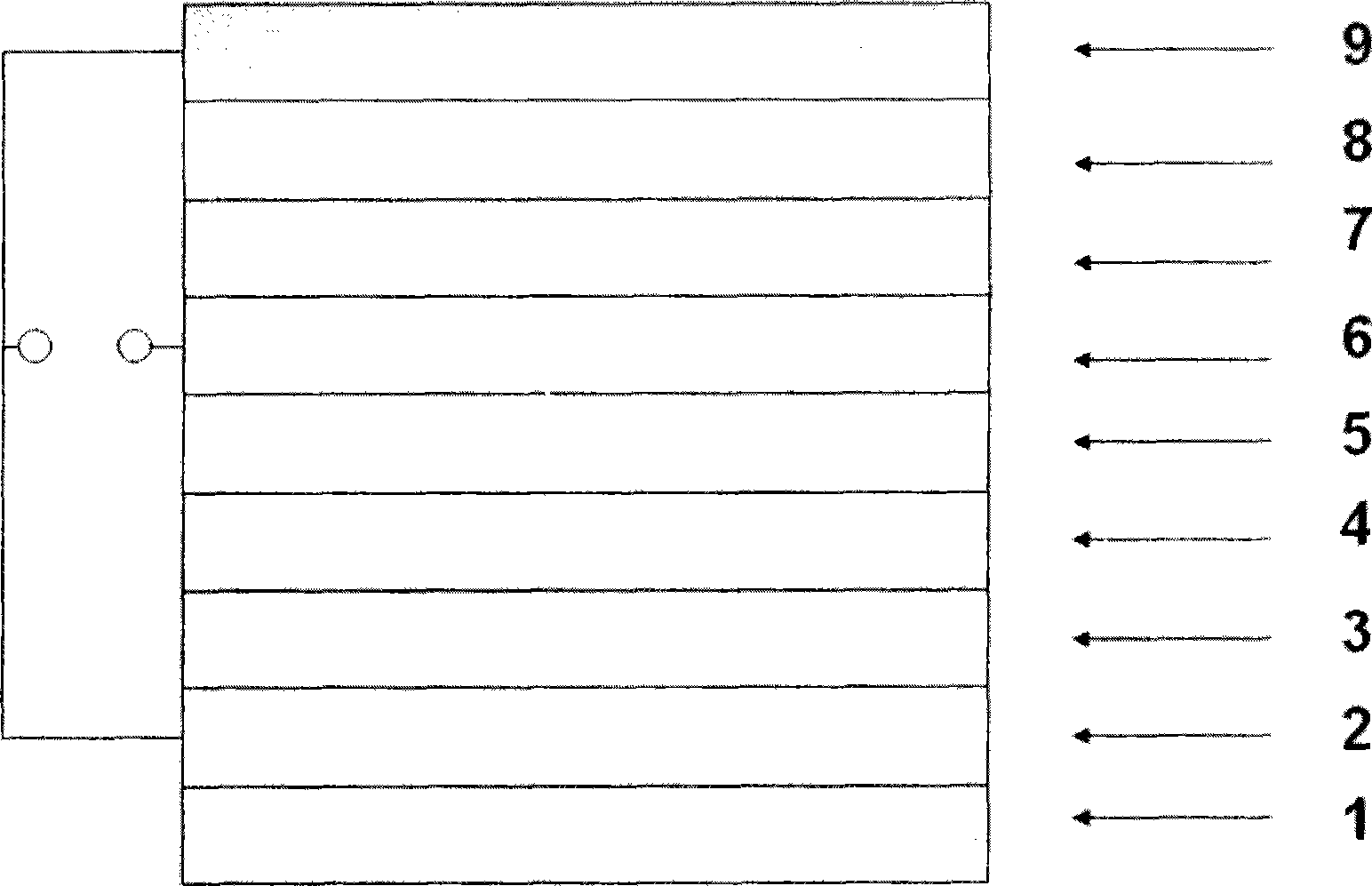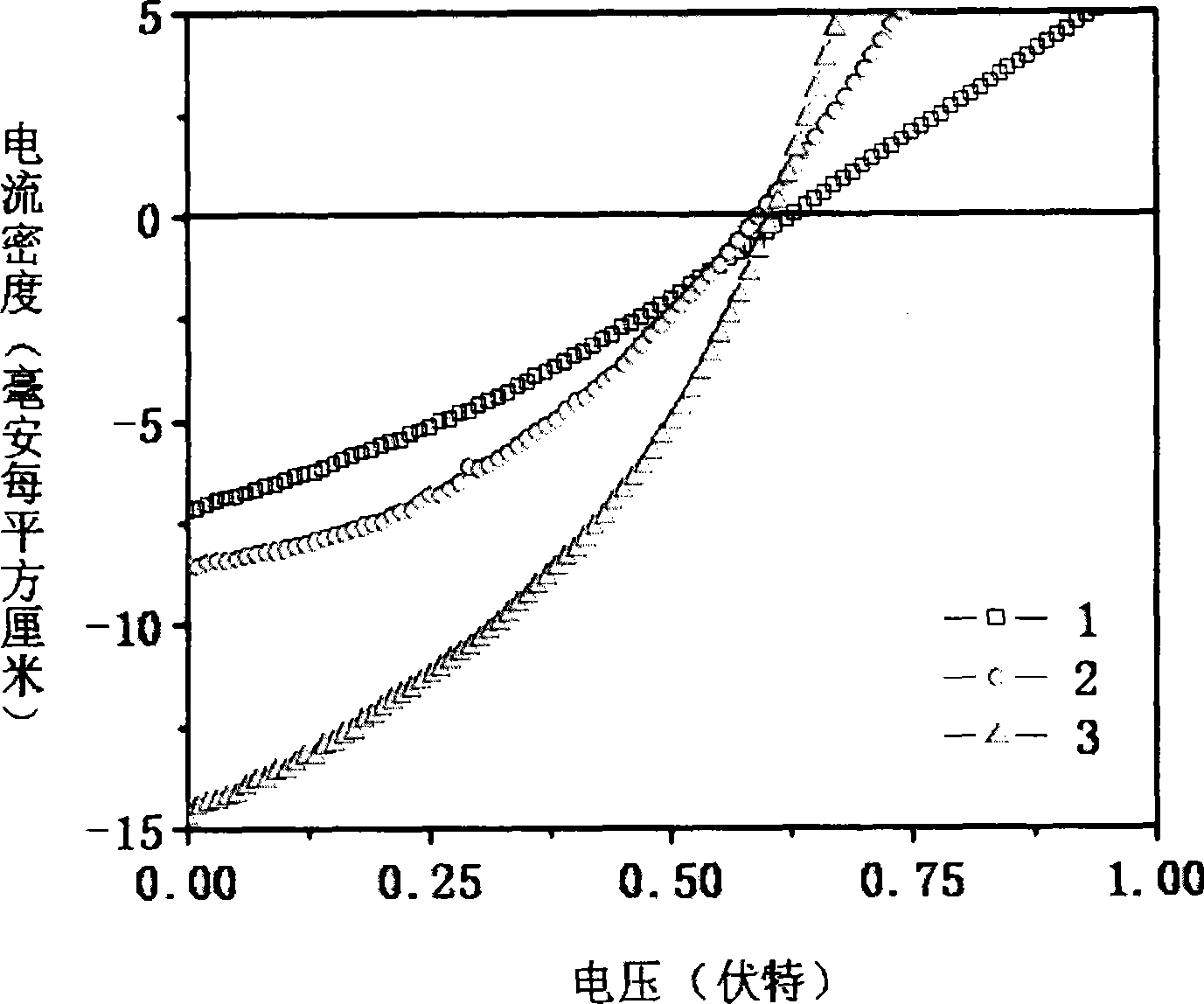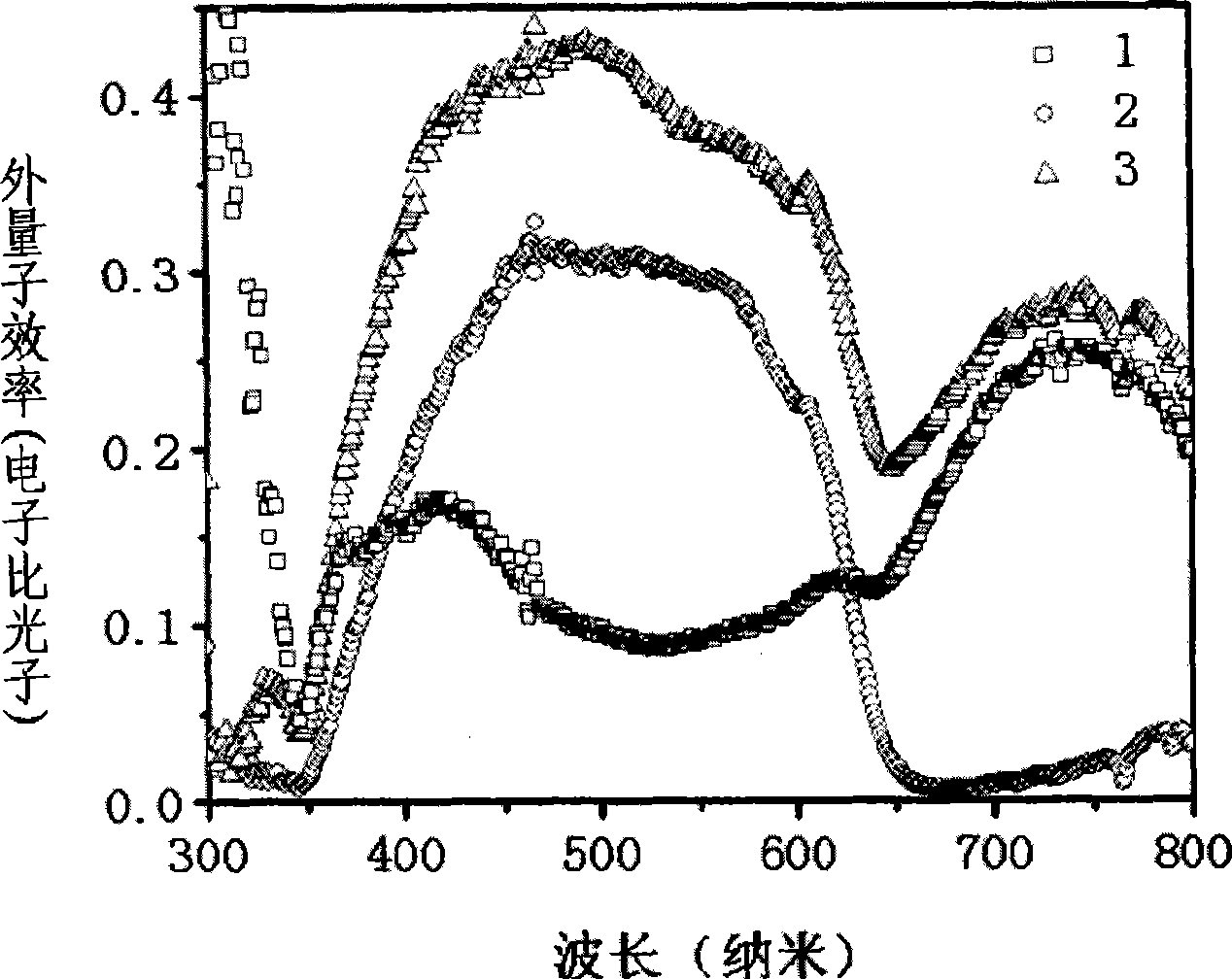Stacking polymer thin-film solar cell with parallel connection structure
A technology of solar cells and polymer films, used in circuits, photovoltaic power generation, electrical components, etc.
- Summary
- Abstract
- Description
- Claims
- Application Information
AI Technical Summary
Problems solved by technology
Method used
Image
Examples
Embodiment 1
[0035] 1) Clean and dry the etched thin strip-shaped ITO conductive glass with a thickness of 150 nanometers, place it on the bracket of the spin coater, and put TiO2 diluted with absolute ethanol x Evenly coat the entire sheet through a 0.45 μm filter head, and rotate at a speed of 3000 rpm for one minute to obtain 10 nm thick TiO x layer as the electron transport layer 3 of the first sub-cell. Will be coated with TiO x Layered substrates were transferred to a glove box and heated on a hot stage at 150°C for 10 minutes in the glove box to remove TiO x solvent in.
[0036] 2) To be coated with TiO x After the layered ITO conductive glass substrate is cooled to room temperature, it is placed on the bracket of the spin coater, and the mixed solution of PCPDTBT:PCBM that has been stirred is evenly dropped on the TiO x The surface of the layer was spin-coated at a speed of 900 revolutions per minute for one minute to obtain the photosensitive layer 4 of the first sub-cell with...
Embodiment 2
[0044] 1) Clean and dry the etched strip-shaped ITO conductive glass with a thickness of 150 nanometers, place it on the bracket of the spin coater, and evenly coat the ZnO nanoparticles diluted with absolute ethanol through a 0.45 μm filter head. Fill the entire sheet and rotate it at a speed of 1500 rpm for one minute to obtain a 50 nm thick ZnO layer as the first sub-battery electron transport layer 3 . The substrate coated with the ZnO layer was transferred to a glove box, and heated on a hot stage in the glove box at 150° C. for 10 minutes to remove the solvent in the ZnO.
[0045] 2) After the ITO conductive glass substrate coated with ZnO layer is cooled to room temperature, it is placed on the bracket of the spin coater, and the mixed solution of PCPDTBT:PCBM that has been stirred is evenly dropped on the surface of the ZnO layer at 500 revolutions per minute. Rotate at a speed of 1 minute to obtain a photosensitive layer 4 of the first sub-cell of 100 nm.
[0046] Th...
Embodiment 3
[0053] 1) Clean and dry the etched thin strip-shaped ITO conductive glass with a thickness of 150 nanometers, place it on the bracket of the spin coater, and put the SnO diluted with absolute ethanol 2 The sol passed through a 0.45 μm filter head to evenly coat the entire sheet, and rotated at a speed of 2500 rpm for one minute to obtain a 20 nm thick SnO 2 layer as the electron transport layer 3 of the first sub-cell. will be coated with SnO 2 Layered substrates were transferred to a glove box and heated on a hot stage at 150°C for 10 minutes in the glove box to remove SnO 2 solvent in.
[0054] 2) to be coated with SnO 2 After the layered ITO conductive glass substrate is cooled to room temperature, it is placed on the bracket of the spin coater, and the mixed solution of PCPDTBT:PCBM that has been stirred is evenly dropped on the SnO 2 The surface of the layer was rotated at a speed of 1000 rpm for one minute to obtain the photosensitive layer 4 of the first sub-cell wi...
PUM
| Property | Measurement | Unit |
|---|---|---|
| thickness | aaaaa | aaaaa |
| thickness | aaaaa | aaaaa |
| thickness | aaaaa | aaaaa |
Abstract
Description
Claims
Application Information
 Login to View More
Login to View More - R&D
- Intellectual Property
- Life Sciences
- Materials
- Tech Scout
- Unparalleled Data Quality
- Higher Quality Content
- 60% Fewer Hallucinations
Browse by: Latest US Patents, China's latest patents, Technical Efficacy Thesaurus, Application Domain, Technology Topic, Popular Technical Reports.
© 2025 PatSnap. All rights reserved.Legal|Privacy policy|Modern Slavery Act Transparency Statement|Sitemap|About US| Contact US: help@patsnap.com



